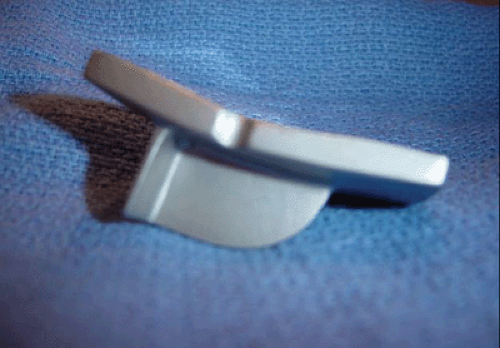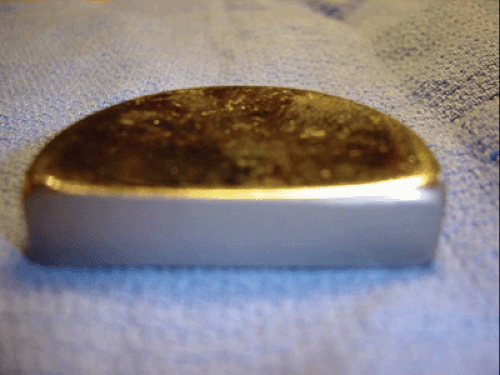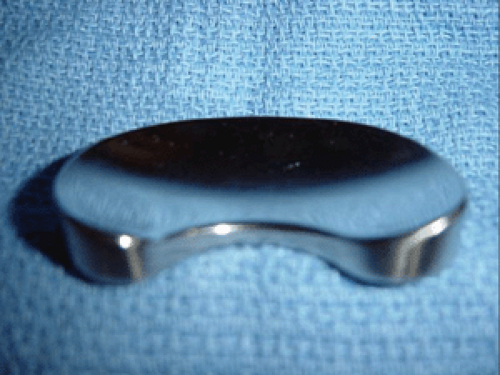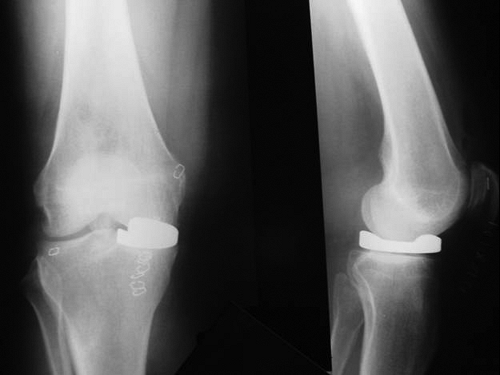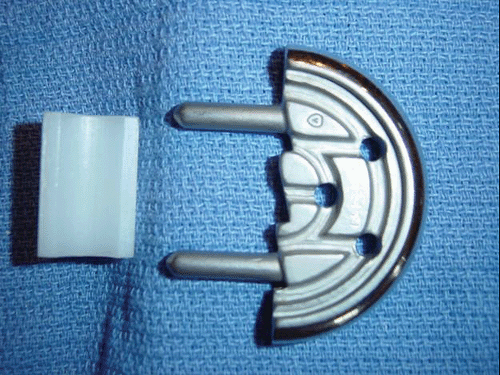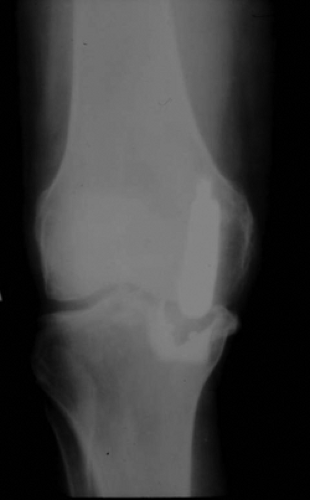Unicompartmental Knee Replacement
Jack M. Bert MD
Hemiarthroplasty of the knee refers to the concept of placing a “spacer” in one half of the femoral tibial joint to prevent bone-on-bone apposition.
The biomechanics and feel of a knee after unicompartmental knee arthroplasty (UKA) generally is closer to those of a normal knee than after total knee arthroplasty (TKA). In addition, studies have shown superior results for UKA compared to upper tibial osteotomy.
The advantages of UKA are that it allows preservation of bone stock, improved range of motion, reduced blood loss, reduced inpatient stay, and decreased cost.
The disadvantages of UKA in the past have revolved around poor instrumentation and design. The design of the undersurface macrostructure of the tibial component in UKA is critical to its ability to withstand shear and offset loading in the laboratory.
Among the clinical indications for UKA are a patient with a relatively sedentary occupation, a patient who is not obese, and unicompartmental pain only.
Improvements in prosthetic devices have allowed the addition two other types of patients: middle-aged patients with osteoarthritis who desire a reliable initial result with retention of both cruciates and easy revision to TKA if necessary, and geriatric patients who probably will not survive the life span of the UKA and who may have medical problems precluding a major reconstructive process.
Hemiarthroplasty of the knee was first described in the 1950s. It refers to the concept of placing a “spacer” in one half of the femoral tibial joint to prevent bone-on-bone apposition. McKeever (1) first introduced his Vitallium “tibial plateau” (Fig 43.5-1) in 1957. MacIntosh (2) followed with an “acrylic tibial plateau” (Fig 43.5-2) in 1958, which was followed in turn by Vitallium in 1964. MacIntosh (2) then presented his initial series in Switzerland in 1967 and published a series of patients in 1972 with “good results” in the “majority” of patients having a follow-up period of 6 years (3). The modern version of the hemiarthroplasty is the “unispacer” (Figs 43.5-3 and 43.5-4), with a reported success rate of 67% to 80% after 2 years of follow-up (4,4a).
During the early 1970s, the Gunston and polycentric unicompartmental arthroplasty (UKA) procedure was introduced (Figs 43.5-5 and 43.5-6). The revision rate at 2 years for these early devices was approximately 10% (5,6). Multiple authors from 1973 to 1983 noted success rates varying between 37% and 92% from 2 to 8 years of follow-up (5,6,7,8,9,10,11,12,13). From 1987 to 1991, long-term results were published, with 87% to 90% survivorship at 13 to 16 years of follow-up (14,15,16).
From 1990 to 1993, several authors reported 90% to 96% fair to good results using a combination of metal-backed and all-polyethylene tibial components with 2 to 7 years of follow-up (17,18,19,20,21). This was the first time that obese patients were noted to have a 1.4-fold greater failure rate (18).
Multiple survivorship studies were reported from 1993 to 2003, with success rates from 87% to 98% noted at 6 to 14 years of follow-up (22,23,24,25,26,27,28,29,30). In one series, 83% of the failures resulted from progressive wear in the unresurfaced compartment (27).
Because of the resurgence in popularity of UKA, primarily as a result of the “mini-incision” technique (30), it is important to understand both the advantages and the disadvantages of this procedure compared to those of TKA and upper tibial osteotomy. The indications and contraindications for this procedure must be understood as well.
When comparing UKA to TKA in patients with a UKA in one knee and a TKA in the other, 75% of patients have noted that their UKA “feels closer to a normal knee” than their contralateral TKA (Fig 43.5-7). The UKA knee had better range of motion and decreased blood loss compared to a TKA knee (31,32,33). In addition, because of only one third of the knee joint is being replaced, the biomechanics of a UKA knee are closer to those of a normal knee than to those of a TKA knee (17).
When comparing UKA to upper tibial osteotomy (Fig 43.5-8), the UKA results in three different series with 3.5 to 15 years of follow-up were significantly superior. Specifically; 46%, 48%, and 65% success rates were found for upper tibial osteotomy, compared to 76%, 90%, and 88% for UKA, respectively (34,35,36).
Stay updated, free articles. Join our Telegram channel

Full access? Get Clinical Tree


